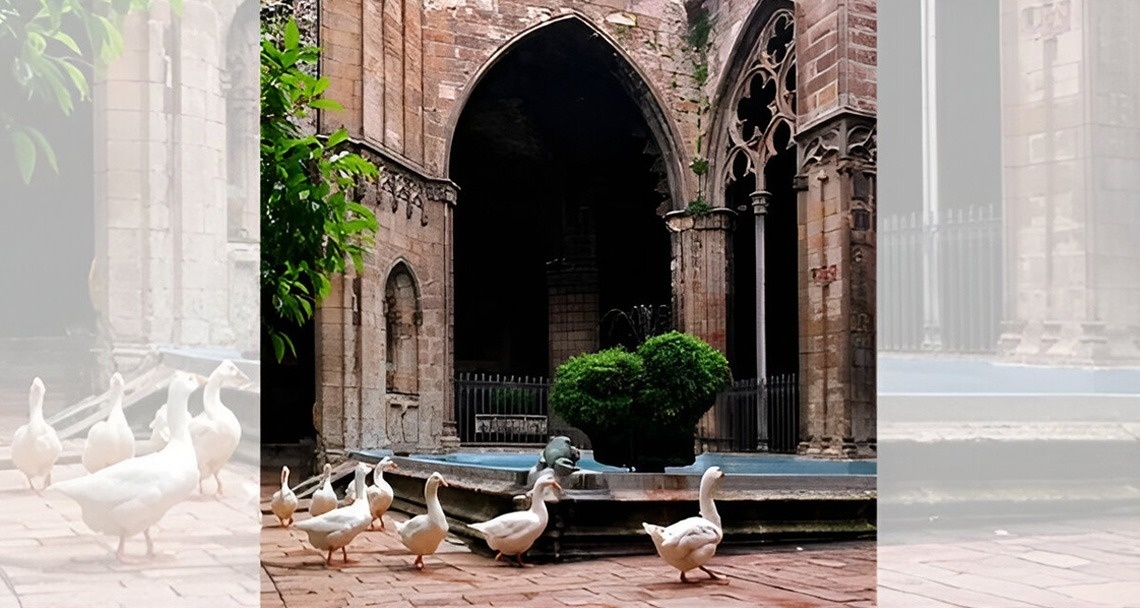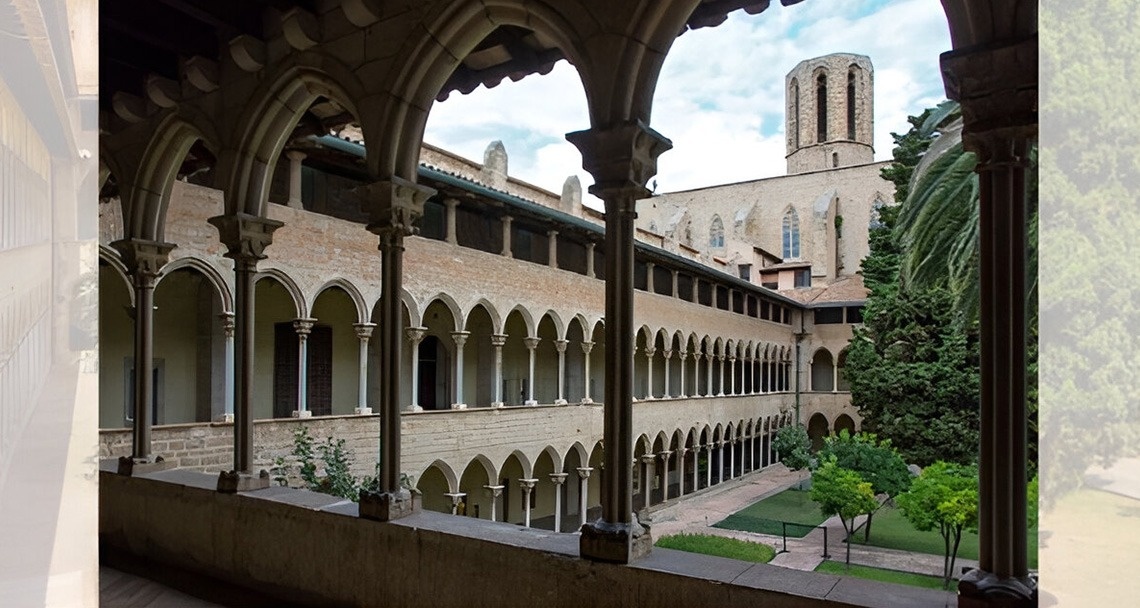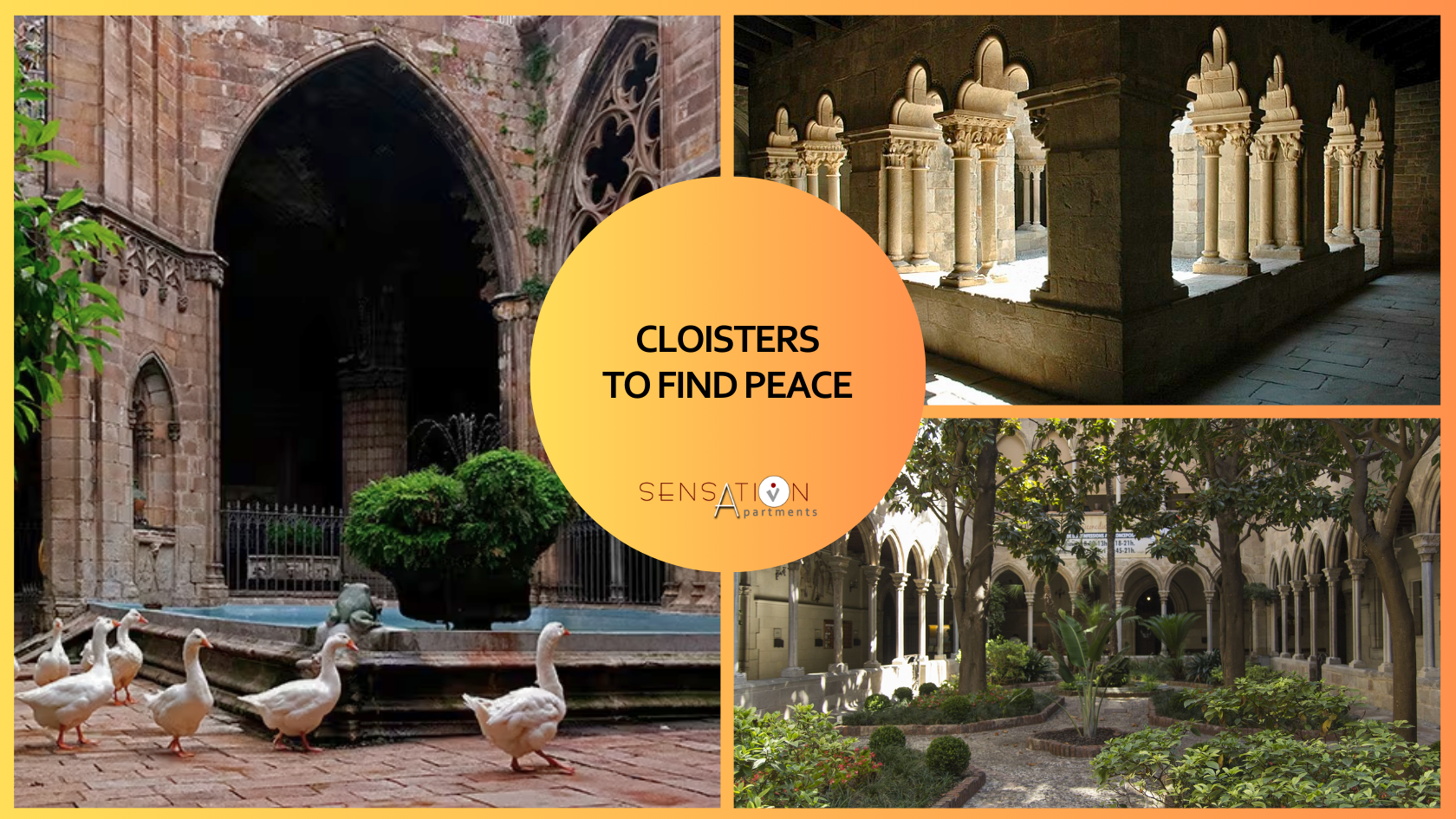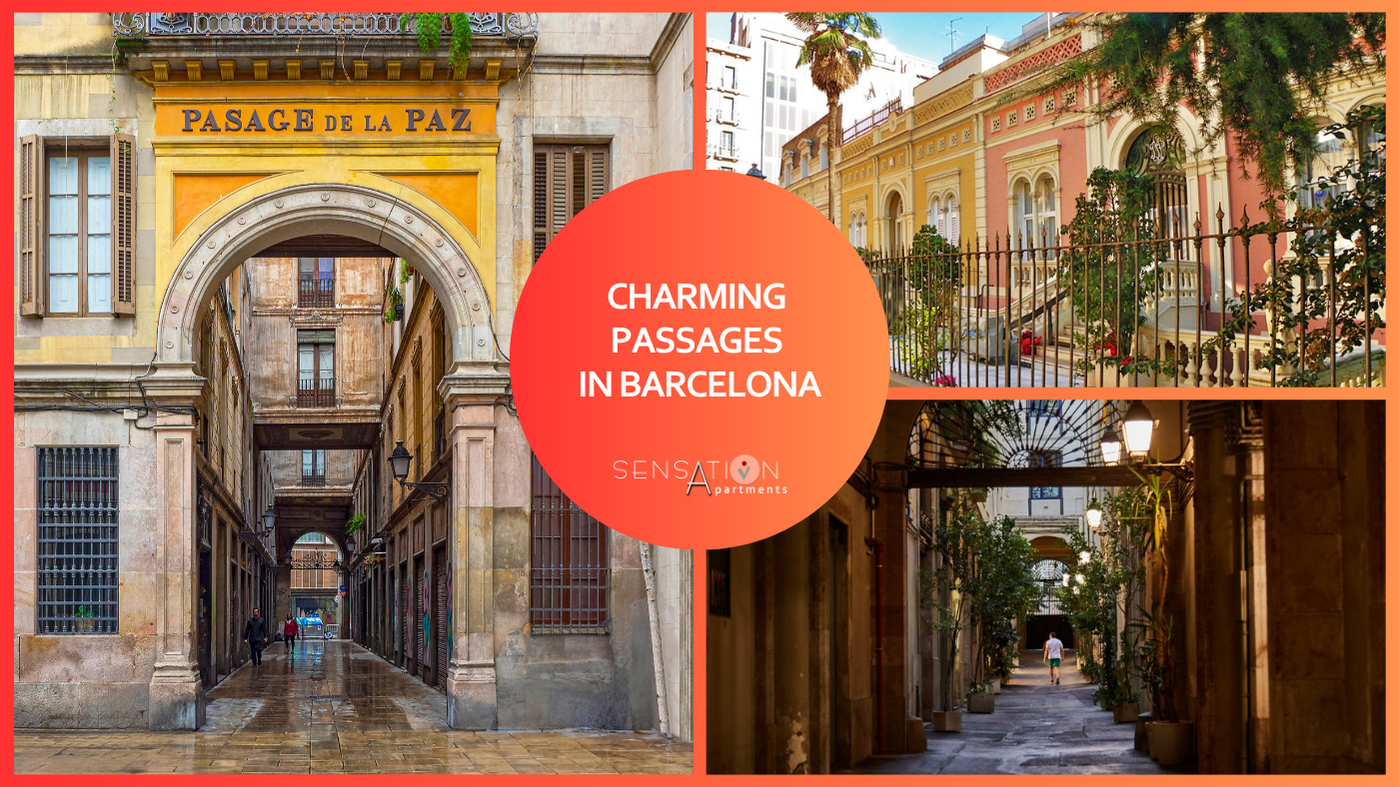Cloisters to find peace
Routes 04/09/2024
The city of Barcelona, like any other capital, is full of energy and activity, but that doesn't mean that you can't find numerous hidden corners where peace and tranquility reign and which allow you to disconnect from the daily hustle and bustle.
Cloisters are a perfect example of this type of oasis where you can take a break. These enclosures, which are usually found in cathedrals, monasteries and churches, are square or rectangular courtyards with a central space surrounded by porticoed galleries. They are beautiful and peaceful places that invite visitors to escape. In Barcelona, some still maintain their religious function, while others, after changes and renovations, have acquired more earthly uses.
Here we present some of the most beautiful cloisters in the city, perfect for those looking for a space for reflection and serenity.
Barcelona Cathedral
Located in the heart of the Gothic Quarter, this cloister is one of the most touristic in the city. In the central courtyard there is a garden with palm trees, magnolias, an orange tree and a fountain from the mid-15th century, where the popular event of "L'ou com balla" (the egg dancing) is held during the Corpus Christi festival.
The thirteen white geese of the Cathedral stroll around the cloister pond. According to tradition, they represent the legend of Saint Eulàlia, the patron saint of Barcelona, condemned for refusing to renounce the Christian faith and who was subjected to 13 martyrdoms, as many as her age. The cloister is accessed through the exterior doors of the Pietà and Santa Eulàlia.

Pedralbes Monastery
Located in the upper part of the city, the Pedralbes Monastery is a haven of peace dating back to the 15th century. Its cloister is one of the largest in Europe, with three floors of Gothic arches surrounding a central garden. Walking through this cloister is like stepping back in time. Its well-kept gardens, peaceful fountains and birdsong invite meditation and rest. In addition, the monastery museum houses a rich collection of religious art, making this visit a complete experience for the senses.

Church of the Conception
It is a Gothic cloister that belonged to the old convent of Santa Maria de Jonqueres, which was located next to the Roman walls.
During the city's expansion in the 19th century, the convent was demolished, but the cloister was moved stone by stone to the new part of the city: the Eixample district. That's why today it can be found in the Church of the Conception, a haven of peace on the busy Carrer d'Aragó.

Church of St. Anna
This Gothic cloister was part of the monastery of Santa Anna, now partially demolished. The church was built in 1177 by the Order of the Holy Sepulchre and still stands together with the cloister.
This cloister is located very close to Plaça Catalunya, in the heart of the Gothic Quarter, and can be accessed directly via Carrer de Sant Anna, 29.
![]()
Saint Paul del Camp
It is one of the hidden treasures of the city. It is located in the Raval district and is part of the oldest monastery in the city, which dates back to the 9th century. It is a simple and small cloister, but it is a beautiful example of Romanesque architecture. With only a few arches and a small garden, the place radiates an atmosphere of seclusion that is difficult to find elsewhere.
![]()
Convent of Sant Agustí
This last cloister has a somewhat different concept from the others, but that does not mean it loses its beauty. It is located in the Born district and is part of the convent of Sant Agustí, which was actually a convent for a few years, from 1506 to 1714, when it was partially demolished during the siege and became a barracks. Over the years it ended up becoming what it is today, a civic centre, more specifically, the civic centre bar, and can be found at Carrer del Comerç, 36.
![]()
In Barcelona you can find numerous hidden corners where peace reigns and its cloisters are the perfect example of an oasis of tranquility.
Cloisters are a perfect example of this type of oasis where you can take a break. These enclosures, which are usually found in cathedrals, monasteries and churches, are square or rectangular courtyards with a central space surrounded by porticoed galleries. They are beautiful and peaceful places that invite visitors to escape. In Barcelona, some still maintain their religious function, while others, after changes and renovations, have acquired more earthly uses.
Here we present some of the most beautiful cloisters in the city, perfect for those looking for a space for reflection and serenity.
Barcelona Cathedral
Located in the heart of the Gothic Quarter, this cloister is one of the most touristic in the city. In the central courtyard there is a garden with palm trees, magnolias, an orange tree and a fountain from the mid-15th century, where the popular event of "L'ou com balla" (the egg dancing) is held during the Corpus Christi festival.
The thirteen white geese of the Cathedral stroll around the cloister pond. According to tradition, they represent the legend of Saint Eulàlia, the patron saint of Barcelona, condemned for refusing to renounce the Christian faith and who was subjected to 13 martyrdoms, as many as her age. The cloister is accessed through the exterior doors of the Pietà and Santa Eulàlia.

Pedralbes Monastery
Located in the upper part of the city, the Pedralbes Monastery is a haven of peace dating back to the 15th century. Its cloister is one of the largest in Europe, with three floors of Gothic arches surrounding a central garden. Walking through this cloister is like stepping back in time. Its well-kept gardens, peaceful fountains and birdsong invite meditation and rest. In addition, the monastery museum houses a rich collection of religious art, making this visit a complete experience for the senses.

Church of the Conception
It is a Gothic cloister that belonged to the old convent of Santa Maria de Jonqueres, which was located next to the Roman walls.
During the city's expansion in the 19th century, the convent was demolished, but the cloister was moved stone by stone to the new part of the city: the Eixample district. That's why today it can be found in the Church of the Conception, a haven of peace on the busy Carrer d'Aragó.

Church of St. Anna
This Gothic cloister was part of the monastery of Santa Anna, now partially demolished. The church was built in 1177 by the Order of the Holy Sepulchre and still stands together with the cloister.
This cloister is located very close to Plaça Catalunya, in the heart of the Gothic Quarter, and can be accessed directly via Carrer de Sant Anna, 29.

Saint Paul del Camp
It is one of the hidden treasures of the city. It is located in the Raval district and is part of the oldest monastery in the city, which dates back to the 9th century. It is a simple and small cloister, but it is a beautiful example of Romanesque architecture. With only a few arches and a small garden, the place radiates an atmosphere of seclusion that is difficult to find elsewhere.

Convent of Sant Agustí
This last cloister has a somewhat different concept from the others, but that does not mean it loses its beauty. It is located in the Born district and is part of the convent of Sant Agustí, which was actually a convent for a few years, from 1506 to 1714, when it was partially demolished during the siege and became a barracks. Over the years it ended up becoming what it is today, a civic centre, more specifically, the civic centre bar, and can be found at Carrer del Comerç, 36.

In Barcelona you can find numerous hidden corners where peace reigns and its cloisters are the perfect example of an oasis of tranquility.







